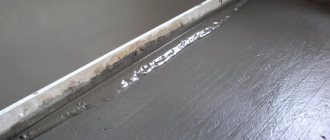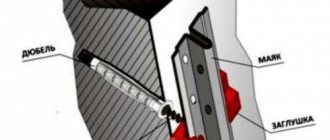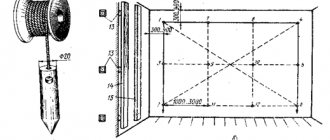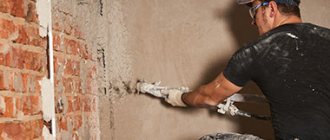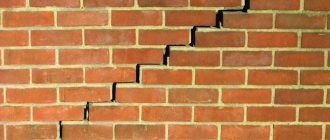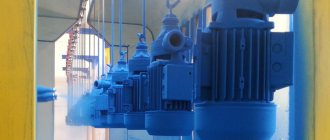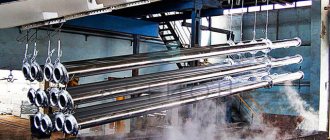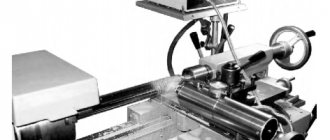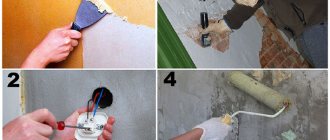It is difficult to overestimate the importance of navigation equipment for the work of navigators. Although modern positioning instruments have many advantages in terms of ergonomics, accuracy and functionality, they are not sufficient to support the safe operation of vessels in the coastal zone. Therefore, on approaches to anchorages and ports, for example, lighthouses are used as a navigator. Their signals allow you to determine the exact location of the vessel and, if necessary, adjust the route.
What is a lighthouse from a technical point of view? As a rule, stationary structures or structures provided with visual observation means. But there are other options that also differ in functionality.
General information about lighthouses
In essence, these are signal stations that perform navigational orientation tasks. The most common are coastal beacons that indicate surface or underwater contours of structures and hazards. The facility may include permanent buildings, engineering equipment, technological devices for signaling and communications. A modern station rarely operates without sources of heat and power supply, and in most cases they are represented by autonomous generators.
At the same time, it is important to distinguish between means of coastal fencing against specific hazards and lighthouses themselves. The functions of the local fence are performed by buoys, milestones and buoys. Such navigation devices can be independent of coastal infrastructure. What is a beacon in terms of functionality? In any version, it is a navigation marking tool, which is perceived by the navigator through special signals. However, the goals of such stations are different.
History of origin
In ancient times, sailors, sailing at night, were guided by ordinary fires that burned along the coast. In the tenth song of the Odyssey, he talks about how the inhabitants of Ithaca lit fires so that Odysseus could find his native harbor. Many centuries passed before people began to build special lighthouse structures. The first information about lighthouse towers was reported by the Roman historian Pliny the Elder in his Natural History. In his time, there were lighthouses in Alexandria, Ostia, Ravenna and other ports of the Mediterranean Sea. The oldest lighthouse is considered to be the Alexandria, or Pharos, tower, built in 283 BC. at the mouth of the Nile at the entrance to Alexandria harbor. It was built by the Greek architect Sostratus by order of the Egyptian king Ptolemy Philadelphus. At night, a fire burned on top of the tower, which, according to contemporaries, “shone like a star” and was visible at a distance of about 30 nautical miles. By the beginning of our era, there were 27 lighthouses in the world. They illuminated the shores of the Dardanelles, Bosphorus, English Channel, Apennine Peninsula, Southern France, and Spain. In the Middle Ages, with the flourishing of the commercial activities of the Hanseatic League, lighthouse towers also appeared in the North Sea. The first of them was built by merchants of the free city of Hamburg in 1286 on the island of Neuwerk at the approach to the mouth of the Elbe.
Despite technological progress and the 21st century, lighthouses are still an integral part of the maritime navigation system. In addition to the purely technical side of ensuring safety at sea, light beacons attract many as a landmark in any area of the world. A visit to the light beacon for the area where it is located is almost a mandatory point in the excursion program.
Purpose of beacons
Marine signal stations can be considered both as a guidance and as an identification means. In the first case, a system is organized consisting of at least two beacons, the line between which forms a route contour. Based on such lines, the navigator changes or plots the course for entering a port or harbor. Single stations are used for identification purposes and designate a specific point - both on the earth's coastal and on the water surface. For example, a lighthouse on an island directly points to a part of the land in the middle of the sea or ocean. In the same way, dangerous areas, port facilities, etc. are indicated. Both types of beacons differ in height. Moreover, dimensional parameters also have functional significance. Thus, the difference in heights between the gate structures makes it possible to determine the direction of movement to a particular object located in this area.
Tips and Cautions
If there are not enough funds to carry out repairs, then it is most profitable to use metal beacons, because they help make the plaster layer thinner, saving on materials. Just 1 cm of solution, which can be removed, will make it possible not to use 10 liters per m2, and for a large room the cost savings will be in bags.
You can make beacons from the mortar itself, for which the unevenness of the walls is determined, self-tapping screws are mounted to the required depth and beacons are made along their heads
When they dry, the main solution is applied to the wall, which is leveled using the rule from floor to ceiling. It is important to work smoothly and slowly, and remove all excess solution into a common tray. The rule itself must remain unchanged in shape and not deform from the weight of the solution
Gypsum beacons are more convenient because they harden faster and are much stronger in operation. Before applying the solution to the wall, it must be moistened with water to make the work faster and more convenient. The rule itself in this case is preferably treated with waterproof paint or impregnated with drying oil that has been preheated.
If possible, then you need to hire craftsmen to install beacons and work on them. They know how to set beacons and work on them much faster, and the result is much better.
There are a number of errors that significantly affect the outcome of the repair, the effort and money spent on it:
- Not a good place for a lighthouse. If you install it not in the deepest place on the wall, then the layer of plaster will be much larger, which means that a lot of money will be spent on repairs.
- Inadequate fastening of beacons. The metal profile has a thin material, so it bends under loads. To fix it, you need to make a minimum interval between fastenings or add mortar under the profile itself in the case of larger-scale fastenings.
- No dismantling work with beacons, which can then rust and show through or crumble and compromise the integrity of the surface.
Taking into account all the mistakes and tips, you can plan the work correctly in order to rationally distribute energy, finances and time, and ultimately get smooth walls and ceilings.
In the video below, watch a modern method of high-quality installation of beacons under plaster.
How does a beacon emitter work?
The typical and most common beacon signaling is a spotlight made in a special configuration. To increase the radiation power, the device uses a complex of mirrors and lenses that ensure the concentration of photon reflection. Some systems use translucent rather than reflective optics. This effect is achieved by composite lenses in an assembly that rotate around the light source. In designs of previous generations, kerosene lamps were used as emitters. They were characterized by independence and complete autonomy, but required painstaking maintenance.
What is a modern lighthouse? These are structures or structures provided by pulsed light sources. The same spotlights distribute light fluxes to optical equipment for wider signal distribution. To power the electrical infrastructure, diesel generators, solar panels or local energy substations are used.
Beacon
Radio beacons, which first appeared in the 1920s, transmit in the frequency band 285-315 kilohertz. In a representative signal lasting one minute, the Morse code station identification is transmitted two or three times, followed by a period of continuous transmission during which the bearing can be received by the ship's direction finding receiver. The bearing accuracy exceeds 3° on average. Transmission frequency varies in different parts of the world. In the busy waters of Europe, radio beacons continuously transmit signals on several different channels within a dedicated frequency band.
Read also: why do birds return from the South?
With the development of satellite positioning systems in the 1970s and 80s, the importance of radio beacons as an aid to marine navigators decreased significantly, although they acquired a second important role in adjusting radio broadcasts to improve the accuracy of satellite systems. The main users of radio beacons currently are small craft operators, particularly recreational sailors.
Color Navigation Properties
The method of supplying light has its own characteristics in terms of color design, determined by standardized requirements. The radiation spectrum is divided into several segments, each of which is assigned a specific shade.
In particular, a white glow indicates that passage in the serviced area is currently safe. The places to pass to the left of the safe zone are marked in red. In contrast, the green light of the beacon characterizes the area to the right with respect to the segment where the vessel is approaching. There are also principles of “day marking”, according to which the stations themselves are painted with several stripes. This allows you to visually distinguish between dangerous objects and beacon towers. At night, a system of sector lights is used. Again, by controlling colors and connecting different segments of the glow, navigators are given signals about the status of certain areas in the coverage area.
Forming a layer of plaster
Preparation of the solution
Before preparing the plaster, you should take into account the features of the wall. For example, sand-lime brick slowly absorbs moisture, which makes it possible to cover large areas with plaster. Red brick walls, on the contrary, quickly absorb water, and therefore need to be plastered in small areas.
The proportions should also be observed correctly. A solution with excessive water content will “float” along the wall. If there is not enough water, leveling the plaster will usually be difficult and slow. Determining the required solution viscosity depends on experience. Application of material
Plastering on beacons is carried out by throwing the mortar onto the wall using a trowel. After this, you should apply the rule to the nearest beacons and move it up and down with slight pressure. This will smooth out the solution and remove any excess. You cannot put too much pressure on the rule, as it will bend inward and deform the finished surface.
The excess collected by the rule should be placed in the gaps formed during casting. After processing with the rule, it is necessary to carry out final leveling of the surface with a smaller rule. If it is planned to remove the beacons, then the empty spaces at their location are leveled with a spatula in level with the rest of the surface.
Classification by signaling method
Optical light signals are the main, but not the only way to attract the attention of navigators. In addition to them, acoustic, fog and radio signaling devices are used. Sirens, diaphones, oscillators and other devices are used to ensure the propagation of sound signals. Recently, radio warning technologies have been actively developing. What is a beacon with a radio station? Most often, these are bearing bases that, within a certain frequency range and radius, determine the approach of ships. They can not only record the location of objects, but also transmit information about the direction, perform calculations based on coordinates, etc.
Process of applying the mixture
In most cases, to level walls with your own hands, it is recommended to use plaster gypsum mixtures.
This plaster solution has a large number of advantages:
- This plaster has a high level of plasticity.
- The layers of this mixture can be thick; the surface will not be covered with cracks upon completion of the repair.
- Plaster with gypsum will provide a high level of sound and thermal insulation.
- It will not have precipitation or lumps on the surface of the walls.
Holes and recesses in the wall must be sealed in advance with cement mortar and allowed to dry. Before starting plastering, you need to carefully stir the mixture using a hammer drill. Only after this can you begin to distribute the plaster over the surface. When applying the solution, it is better to use a wide spatula so that you can apply the plaster in a thick layer. It is necessary to level the layers of the plaster mixture from bottom to top, using the rule (a bar of smooth reinforcement). After leveling the plaster, it is better to remove the excess immediately so that it does not dry out and interfere with the finishing work.
Classification by location
Two types of lighthouse are fundamentally different - the already mentioned coastal and floating. The former can be installed on the shore, on an island or in an area remote from the coastal line. The most advantageous places for such objects are hills and areas open to visual observation, where navigation equipment can operate without interference.
As for floating stations, they are used on ships and other waterborne equipment. That is, this is not stationary, but mobile or even portable equipment. There is also a group of floating lighthouses that are placed as identification devices at the entrances to canals and straits. Their cases are decorated in a special color for a more pronounced visual effect.
Installation subtleties
Before fixing the beacons under the plaster, it is necessary to mark the base. In this case, you can rely on various techniques.
Let's take a closer look at the simplest method of marking the floor for mounting guides.
- First, make a 30 cm indent from the corner (15 cm from the floor and ceiling).
- Draw a vertical strip, check it with a level, and then repeat this operation, but on the opposite side.
- Now you need to measure the gap between the drawn lines and divide it by 1.5 m. The resulting number will indicate the required number of beacon guides. The elements must be cut so that they become 30 cm shorter than the ceiling height.
- At the points of the lines below and above it is necessary to drill holes for installing dowels.
- Now you need to draw out the entire wall covering with lines, maintaining a step of 1.5 m.
- Screw the screws into the holes made. Stretch two threads between the caps. In areas where the rope intersects (as well as the marked lines), you also need to make holes and insert dowels with self-tapping screws into them.
- Now level the fastener heads. To do this, you need to add up the values of the ceiling slope, the beacon thickness parameter and leave a small margin (about 0.5 cm). The result obtained will indicate how far the fasteners should recede from the ceiling.
- Having positioned the screws, you need to pull the threads diagonally and guide the beacons under this plane. Make sure that the guides only lightly touch the thread.
After marking the base, you can proceed to the direct installation of the beacon guides.
First, let's look at how to do this using a solution or glue.
- First, prepare the solution. To do this, be sure to use the instructions - they should be on the box. If you want to decorate the walls with a cement or lime composition that takes a very long time to fix, then you should mix gypsum or alabaster into them.
- Apply the finished composition to the wall in small portions. It must be laid every 15-20 cm, based on the marked lines.
- Now the profile must be applied to the layer of composition and pressed to the base. When using the simplest markings, the beacon must be placed in such a way that it is level with the screws.
- Check the alignment of all parts using a level.
- Remove excess solution and proceed to fixing the following parts.
Installation on fasteners occurs a little differently.
- To attach beacons, parts called “ears” or clips are used. In this case, for installation, the guides are placed on the heads of self-tapping screws, previously screwed into the prepared holes (in increments of 30 cm).
- Next, the beacon element is attached and the latch is installed in the desired place.
Operational requirements for the lighthouse
Since the operation of a marine signal station bears high responsibility, the following requirements are approved even before the development of its project:
- the structure must be visible day and night;
- regardless of the time of day, the light of the beacon must be different from random lights for other purposes;
- the tower infrastructure must provide fog alarms;
- The visual identification function must be provided by both illuminated and unilluminated signal marks.
Estimated cost of materials and labor
The final cost depends on the composition of the plaster mixture. Here are approximate prices for packaging material (calculated for 25 kilograms):
- Cement - from 150 to 400 rubles;
- Plaster - from 250 to 500 rubles;
- Limestone – from 200 to 350 rubles;
- Decorative plaster – from 500 to 1000 rubles.
The cost of the work depends on the chosen material. Naturally, applying decorative plaster will cost much more than cement plaster: 700-1000 rubles per square meter of surface.
You can avoid paying for specialists and do the work yourself using beacons.
